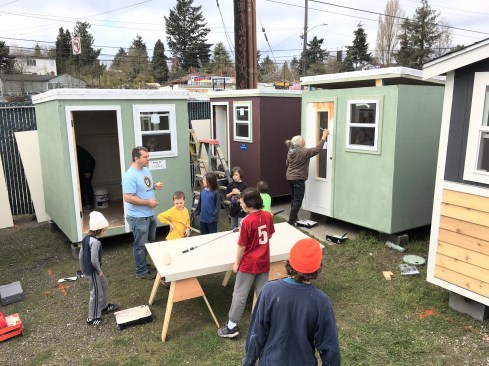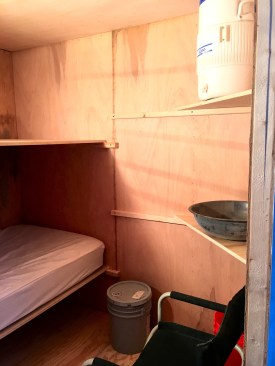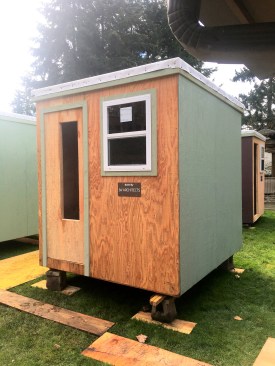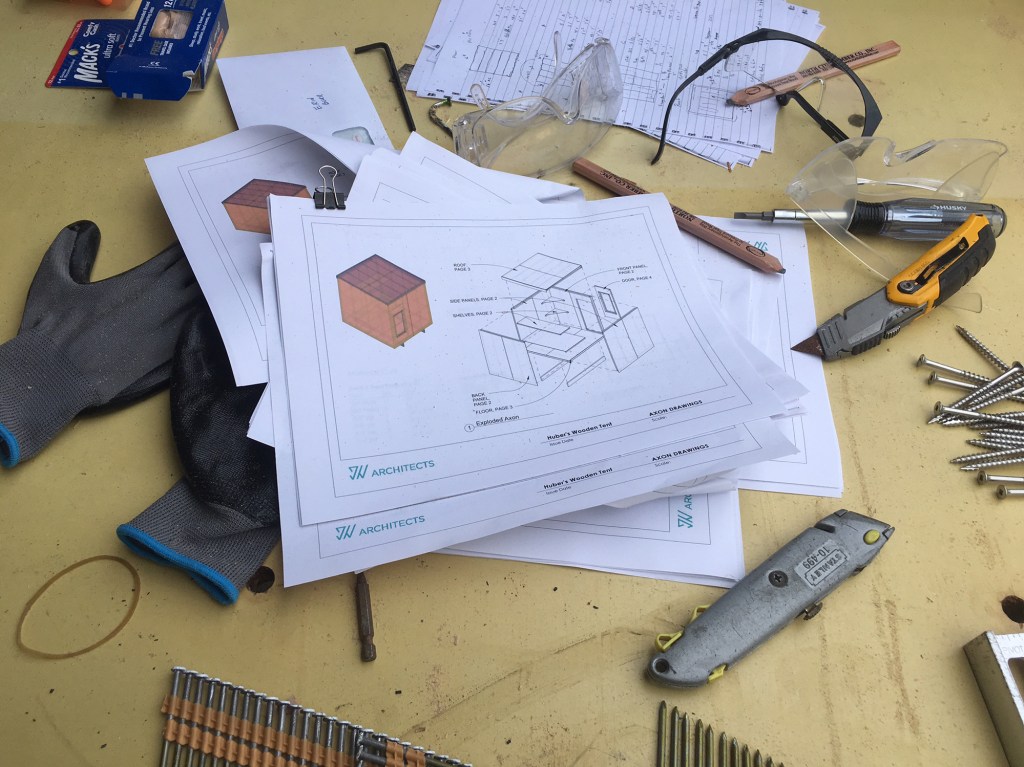Mark Huber is a custom builder and remodeler based near Seattle. But in his free time, Huber likes to give back to the community—most recently, with a simple solution to the basic shelter needs of the area’s homeless people.
Several Seattle-area homeless encampments have been provided with “tiny homes” for temporary housing. But Huber saw a drawback: Setting even the smallest units on site required a truck and a forklift. Inspiration came when Huber was helping his daughter pack for a move. “She had a little sauna spa made out of six panels, with a little radiant heater,” he told JLC. “Two people can disassemble it in about half an hour, put it on a truck, move it someplace, and put it up in a backyard or anywhere. So I thought, why can’t we come up with something like that for these little homeless buildings? We could build them off site and then bring them in and assemble them with little effort.”

In their present version, Huber’s small shelters are framed using 2x3s in the floor panels, and 2x2s in the wall panels. Cavities are insulated with R-10 foil-faced foam and the frames are skinned with plywood on both faces (3/8-inch resawn plywood on the outside, and 1/4-inch AC plywood inside). Roofs are framed with 2x4s cut on a taper to create the slope, skinned with plywood, and roofed with 45-mil TPO roofing. Huber folds the roofing over the edge of the panel and screws it to the side to form a simple drip edge.
To set a shelter up, two people carry the panels to the site and assemble the unit with screws: “We overhang the plywood on the side panels about 2 1/8 inches, and on the bottom we overhang it about 3 inches,” Huber said. “Then we use metal roofing screws with a small washer on them to fasten the panels together, so the panels are held together by this overlapping plywood. To attach the roof panel, I have a 2×2 cleat on the inside wall that I screw up through into the roof.”


The simple shelters aren’t meant to be permanent homes, said Huber: “It’s not your final destination. This is the first step out of a tent, into someplace a little bit more secure.”
But that first step matters, he said: “If you ever ask a homeless person what they want the most, it’s a good night’s sleep. Someplace where they feel secure, and safe, and dry. When I step inside that unit, I have a bed and a mattress, and I can lock the door, sit down, and take a breath and collect my thoughts. I don’t have to worry about survival, or whether it’s going to rain, or whether somebody might steal my stuff. It’s the first step towards adding structure to people’s lives. And that’s what they need to be able to move on to the next step.”
